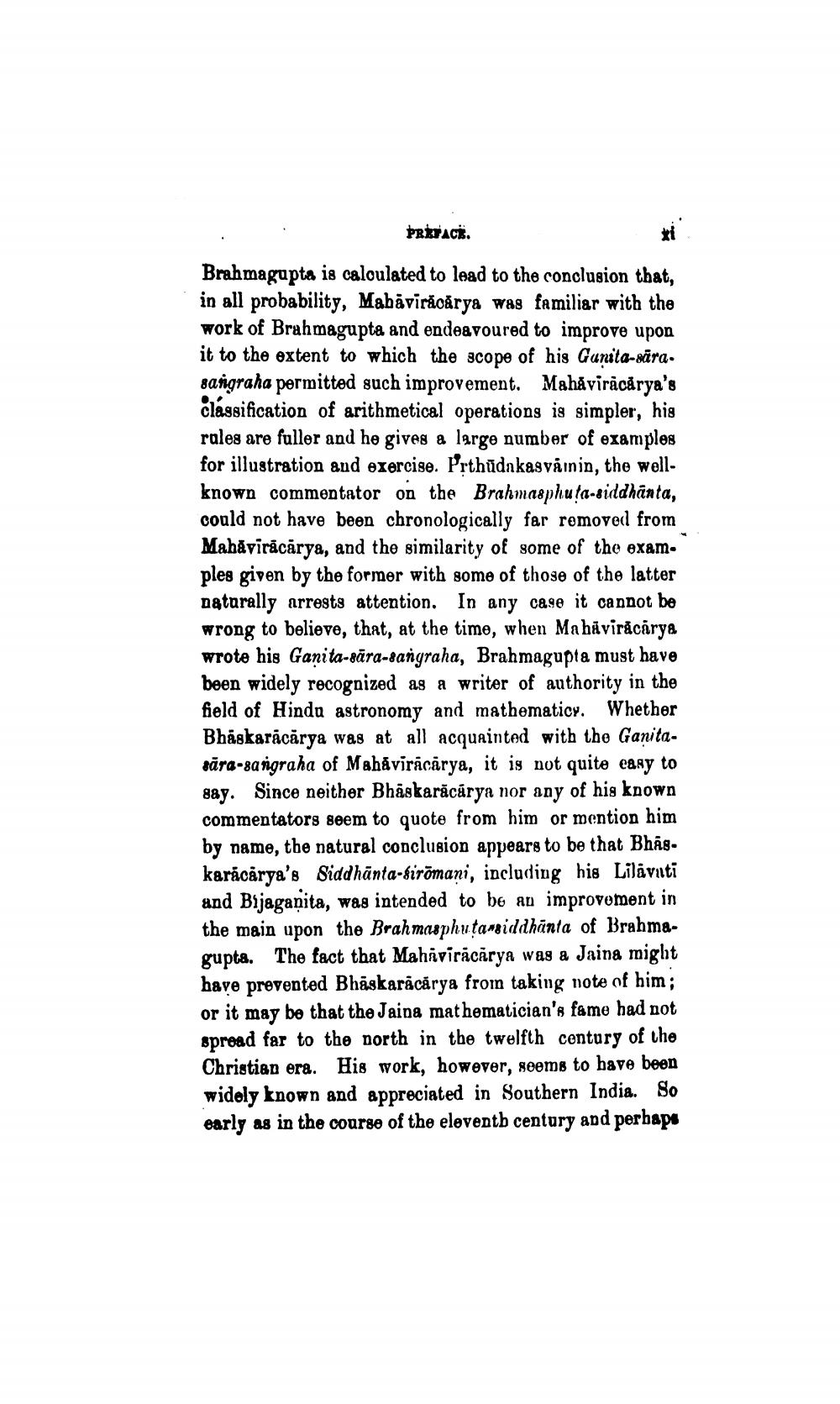________________
PRIVACE.
Brahmagupta is caloulated to lead to the conclusion that, in all probability, Mabăvirãoárya was familiar with the work of Brahmagupta and endeavoured to improve upon it to the extent to which the scope of his Gunita-sāra. sangraha permitted such improvement. Mahăvirácărya's classification of arithmetical operations is simpler, his rales are fuller and he gives a large number of examples for illustration and exercise. Prthūdnkasváinin, the wellknown commentator on the Brahmasphuta-siddhānta, could not have been chronologically far romoved from Mahăvirācārya, and the similarity of some of the exam. ples given by the former with some of those of the latter naturally arrests attention. In any case it cannot be wrong to believe, that, at the time, when Mabávirácārya wrote his Ganita-sära-sangraha, Brahmagupta must have been widely recognized as a writer of authority in the field of Hindu astronomy and mathematicy. Whether Bhaskarācārya was at all acquainted with the Ganitasāra-sangraha of Mahavirácārya, it is not quite easy to gay. Since neither Bhaskarācārya nor any of his known commentators seem to quote from him or mention him by name, the natural conclusion appears to be that Bhag. karácărya's Siddhānta-firõmani, including his Lilavati and Bijagaạita, was intended to be an improvement in the main upon the Brahmasphutamsiddhanta of Brahmagupta. The fact that Mahavirácārya was a Jaina might have prevented Bhaskarácărya from taking note of him; or it may be that the Jaina mathematician's fame had not spread far to the north in the twelfth century of the Christian era. His work, however, soems to have been widely known and appreciated in Southern India. So early as in the course of the eleventh century and perhaps




